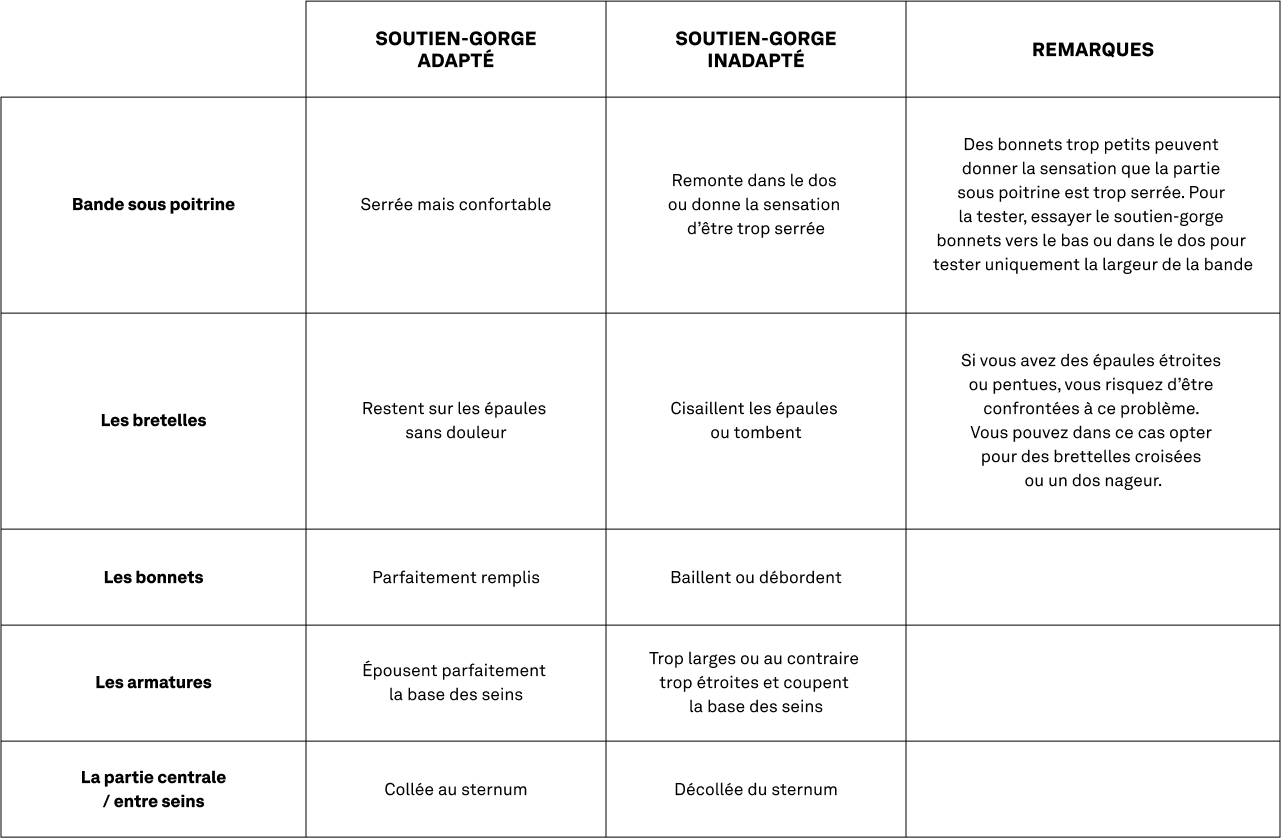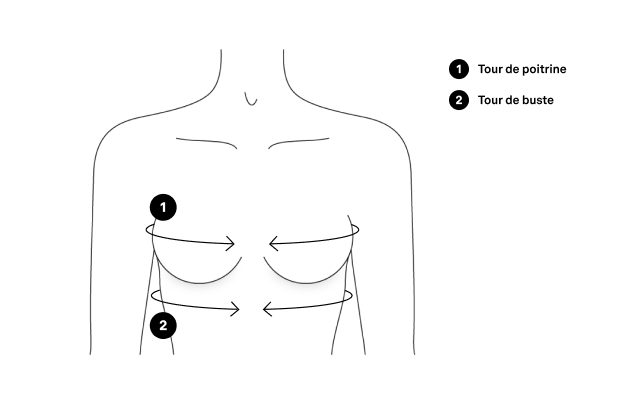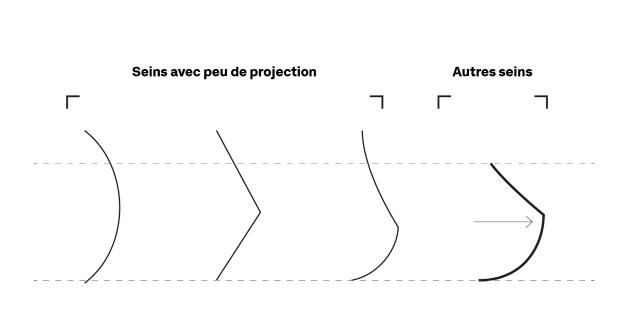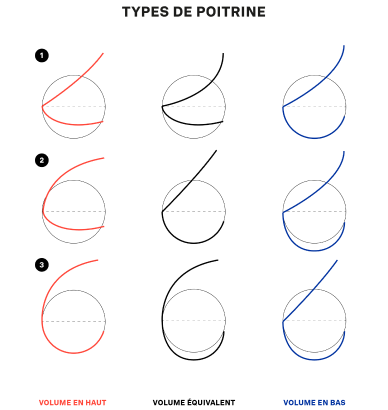According to a survey by abrathatfits.org, the average woman tries on 17 bras before finding one that feels right. It’s a frustrating and costly quest—and one that often ends in disappointment. 8 out of 10 women end up settling for bras that don’t really suit them. Some even decide to go without. The Covid lockdowns revived the “no bra” trend, first championed by early feminist movements.
Are bras headed for the “freedom bin,” just like in May ‘68?
An IFOP study seems to support that idea: 18% of women under 25 say they no longer wear bras at all, compared to just 4% before Covid. The same goes for 7% of women over 18 (vs. 3% pre-pandemic). This isn’t about ideology. These women cite discomfort, lack of support, and even negative impacts on health and breast shape as their main reasons for ditching the bra.
Still, not everyone is ready to say goodbye. For women with fuller busts, bras are essential to daily comfort. And for many, wearing one in public feels socially required—linked to modesty or even sexual pressure. 69% of women point to the “nipple taboo” as a reason they won’t go out braless. So, if bras are here to stay, it’s time we rethink them—especially in the context of Chamade knitwear, where comfort and freedom of movement are core values.
At Chamade, we didn’t want to stick to standard-size bralettes just because the subject is complex.
We wanted to design tops and bras that adapt to the specific needs of different breast shapes and sizes. That’s why we took the time to study all the parameters—and to rediscover our own boobs (with a few surprises along the way!).
We’re proudly boobs-friendly, and we’re here to share what we’ve learned. There’s no magic formula for finding the perfect bra. You just need to get to know yourself better: take your measurements, and learn about your breast shape. Follow us—we’ll guide you through the process! and learn about your breast shape. Follow us—we’ll guide you through the process!

What Makes the Ideal Bra?
Listed in the French dictionary since 1904, the bra has evolved a lot since its invention. So why are women still struggling to find a proper fit in the 21st century?
To answer that, we need to define what makes a bra ideal—and what makes a bad one.
In theory, a bra should lift the breasts and relieve the back by distributing their weight. For that to work, the band, straps, cups, wires, and center panel all need to sit correctly on the body.

Poorly fitted bras often cause aesthetic issues—but above all, they create discomfort and even pain. Some lead to real health concerns.
Wearing cups that are too small can cause breast tissue to migrate upward and toward the armpits. This reshapes the bust over time and can lead to visible bulges. Cela est le fait d’une circulation de la lymphe moins efficace. It also disrupts lymphatic flow, which is essential for removing toxins from the body.
It’s a common issue: many women wear bras with cups that are too small and bands that are too loose. The good news? It’s reversible.
With the right bra size, many women see their bust reshape itself. With a deeper cup, lymph flow improves, tissues settle back into place, breasts gain volume, and the back appears slimmer.
That’s why molded bras should be avoided. Built on the myth of “perfectly round” breasts, they force one shape on every woman and flatten the bust—worsening tissue migration and hiding poor fit.
Size does matter
- – Standard sizing is based on statistics, assuming B and C cups are the norm.
- – Body image biases: many women (and men) misjudge their body.
- – Bodies change—with time, and even week-to-week during the cycle.
- – There’s a surprising lack of education. Most women choose bras based only on how they look.
STEP 01: Measure Your Base
Few women actually take their measurements—yet sizing is the foundation of bra construction.

To find your “perfect fit,” take five minutes to measure:

1. Your underbust measurement: This is the most important one—it supports 70% of the weight.
- Wrap the tape under your bust and take two measurements: First, while exhaling and tightening the tape slightly.
- Second, at a comfortable tension. Your band size is somewhere between these two figures.
TIP
UK sizing (in inches) is more intuitive: the number directly matches the band size.
French sizing adds +15 cm to the underbust in cm.
US sizing follows UK logic for the band but differs for cup labels past D.
If unsure of your size, start with your UK size, then convert to French and US equivalents.
Band Size Conversion Table
Underbust (cm) | FR Size | UK/US Size
68–72 | 85 | 32
73–77 | 90 | 34
78–82 | 95 | 36
83–87 | 100 | 38
88–92 | 105 | 40
93–97 | 110 | 42
98–102 | 115 | 44

2. Your full bust measurement (at nipple height):
This will determine your cup size by calculating the difference between your bust and underbust.
Cup Size Conversion Table (FR / UK / US)
Difference (cm) | FR Cup | UK Cup | US Cup
<2.5 | AA | AA | AA
2.5 | A | A | A
5 | B | B | B
7.5 | C | C | C
10 | D | D | D
12.5 | E | DD | DD/E
15 | F | E | DDD/F
17.5 | FF | F | G
20 | G | FF | H
22.5 | GG | G | I
25 | H | GG | J
28 | HH | H | K
30.5 | J | HH | L
33 | JJ | J | M
35.5 | K | JJ | N
38 | KK | K | O
| Différences n°2 - 1 (inch) | <1 | 1 | 2 | 3 | 4 | 5 | 6 | 7 | 8 | 9 | 10 | 11 | 12 | 13 | 14 | 15 |
|---|---|---|---|---|---|---|---|---|---|---|---|---|---|---|---|---|
| Métrage (en cm) | <2,5 | 2,5 | 5 | 7,5 | 10 | 12,5 | 15 | 17,5 | 20 | 23,5 | 25,5 | 28 | 30,5 | 33 | 35,5 | 38 |
| Bonnet | AA | A | B | C | D | DD | E | F | FF | G | GG | H | HH | J | JJ | K |
You now have your base size in FR, UK, and US formats. But remember: centimeters don’t tell the whole story—volume and shape matter too. That’s where Step 2 comes in.
STEP 02: Understand Your Breast Shape
To find a truly comfortable fit, you need to assess how your volume is distributed in three dimensions: width, depth, and height.

Width (Diameter): Is your breast base narrow or wide?
The base is the circular area where the breast connects to the torso—also called the "root."
The lower part is defined by the inframammary fold, which becomes visible when you raise your arms in front of a mirror. If your tissue is soft or your bust is fuller, you can lift your breast slightly and mark the position of the fold to outline the base.
This helps to avoid underwires that are too wide or too narrow, which can cause pain and tissue migration. With the right bra, underwires hug the base of the breast perfectly.
That’s why it’s important to choose a bra based not only on cup depth, but also on cup width. Wider breast bases need wider underwires, while narrower bases require narrower underwires.

Depth: Do your breasts project forward, or lie closer to the chest?
Projection is how far the breast naturally extends from the body.
Projection refers to how much the breasts naturally extend forward. It’s closely linked to the width of the breast base: the wider the base, the more the breast tissue tends to spread out to the sides rather than project forward. Of course, there are always exceptions.

Breasts with medium projection are usually easy to fit, since most bras — around 90% — are designed for this shape. But breasts with low projection, or very projected ones, often struggle to find cups that truly suit their needs.

Height: Where is most of your breast volume—top or bottom?
This step is about understanding whether your breasts carry more volume at the top or the bottom — regardless of your band size. Keep in mind that gravity can affect how they appear, since the tissue is naturally pulled downward.
Some breasts are:
- fuller on top
- some on the bottom
- .and others have a balanced shape
All combinations are possible, as shown in the diagram opposite:
To assess shape: Lean forward (torso parallel to the ground) and look in the mirror.This position allows the breasts to settle into their natural shape and position, without the effect of gravity pulling them downward. It gives you a more accurate view of their true volume and how it’s distributed.
- Shorter bottom curve = volume on top.
- Shorter top curve = volume on the bottom.
- Similar curves = evenly distributed volume.

This detail can help you choose the right cup construction. Some bras are made for top volume, others for bottom volume. Most brands don’t mention it—leading to fitting issues wrongly blamed on size.
Build Your Personal Diagnosis
Now you can build your own fit profile:
- Your measurements get you close to your ideal size.
- Your shape helps identify the right model or brand.
Just so you know, other factors can affect how accurately you determine your cup and band size. We promise — this is the final step. We’ve listed the key elements to help you fine-tune your assessment.
| LET'S TALK | BODY TYPE: |
|---|---|
| I have a fuller figure, | so I try a slightly smaller band size than what’s recommended in Step 1, knowing the underband will loosen a bit with wear. |
| I have a lean or muscular build, | so I try a slightly larger band size than what’s recommended in Step 1, since I may be more sensitive to pressure than someone with a softer body type. |
| LET'S TALK | BREAST SHAPE |
|---|---|
| My breasts have a narrow base, | so I try a smaller cup size — the underwires, if present, will fit better, and my breast will fill the cup more naturally. |
| My breasts have a wide base | ,so I try a larger cup size — the underwires, if there are any, will be a better fit, and the volume that spreads across both the width and height of the breast needs more space. |
| My breasts have a conical or pear shape, | so I try a smaller cup size | — the volume tapers toward the end, so there's less fullness at the tip.
| My breasts are heavy, forward-projecting, or tend to sit lower on the chest. | This is the case where the sizing method tends to be the least accurate. It's usually best to try a larger cup size, since the band measurement doesn’t fully reflect the overall breast volume. |
| My breasts are very firm and | /or I have implants, so I try a larger cup size | — they’re often rounder than natural breasts and may need more room in the cup.
| My breasts have more volume at the bottom | , so I try a larger cup size — the band measurement tends to underestimate their overall volume. |
| My breasts are very widely spaced, | so I choose a bra with a wide center gore and try a smaller cup size — the space between my breasts won’t fill the center of a standard bra. Alternatively, I go for a one-piece cup style. |
| My breasts are very close-set | ,so I choose a bra with a narrow center gore and/or try a larger cup size — the breasts fill all the space in the center. Alternatively, I go for a one-piece cup style. |
| My torso has a V-shape | — due to my ribcage, muscle structure, or fat distribution — so I try a smaller cup size, since the added volume doesn’t come only from the breasts, but also from muscle, bone, or surrounding tissue. |
| My torso has an inverted V-shape — | due to my ribcage, muscle structure, or fat distribution — so I try a larger cup size, since the soft tissue under the breasts can distort the band measurement. |
- Your size (XS / S / M / L / XL) based on underbust, which ensures support.
- Your breast type (petite / average / full), which defines coverage and support needs.
Our mono-cup designs welcome narrow or wide breast bases, projected or shallow busts. Guided by thoughtful design lines, your breasts settle naturally where they belong.
Was this guide helpful?
Reach out and share your experience—we’re constantly refining Chamade knitwear, and your feedback helps us improve with every stitch.

